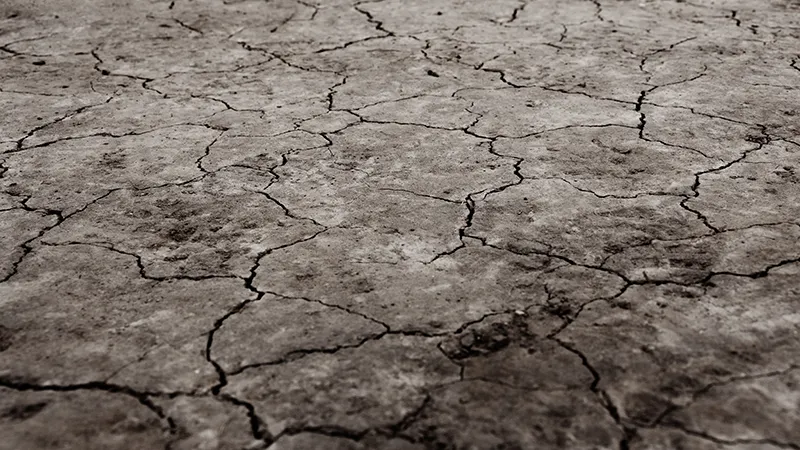-
CENTRES
Progammes & Centres
Location

On Thursday evening, industrialist Anand Mahindra tweeted: "At our Group Executive Board, our agri business leaders highlighted the unprecedented pan India water crisis, reservoirs at 29% of capacity." He followed this up with another tweet: " Ironic.. that in the 21st century our economy looks skyward for deliverance, as our ancestors did; tragic in terms of farmer's lives". Earlier on Thursday afternoon, a bellicose Supreme Court asked the Government of India — "How many Additional Solicitor Generals do you have? There are many ASGs but still no one is available for this case? Are we useless people who are supposed to come to court and watch? It seems drought is not on your priority list?"
The war on drought is real and the government cannot dodge the bullet anymore. While its recent budget was skewed completely towards alleviating rural distress due to two successive years of drought and rural incomes as a consequence falling off the cliff, much more needs to be done to fix what is clearly broken. The bench further argued that allocation towards MGNREGS was insufficient given the magnitude of the water crisis. Despite apprehensions over the veracity and workability of MGNREGS, the Modi Govt. decided to ramp up funding to Rs 38,500 crore, up from Rs 34,699 crore in the previous year. Last year 217 crore man days were delivered by what everyone agrees is a flawed scheme since it doesn't help build capital assets of any kind and where slippages, leakages and corruption have dominated.
Moreover, only 27% wage payment was paid on time in 2014–15 which was upped to 45% in 2015–16. But it is clear that drought hit areas require even more funds. Already the agricultural ministry grappling with rural stress has asked for an additional Rs 15,000 crore. Over its 10 year life cycle, the government has spent Rs 3,13,844.55 crore and out of this 71% has been spent on wage payments to workers. The total number of man days stands at 1,980.01 crore and the percentage worked by women has increased much above the statutory minimum of 33%.
The extent of the agrarian crisis has not been understood by those residing in India, while Bharat is parched. As many as nine states — Karnataka, Odisha, Maharashtra, Madhya Pradesh, Chhattisgarh, Jharkhand, Uttar Pradesh, Andhra Pradesh and Telangana have declared drought like conditions across their states. As many as 302 of the 640 districts in India experienced deficit rains last year which translates to at least a 20% shortfall compared to the normal. In Maharashtra alone, 2,234 farmers committed suicide between January and September, revealed a Right To Information (RTI) response from the state revenue department. The crisis is unprecedented. According to Rythu Swarajya Vedika, an umbrella organisation of non-governmental organisations in Telangana that collects data on farm suicides, 1,713 farmers have killed themselves from June last year till December last year. Karnataka reported 516 farm suicides last year (till mid–October), according to data provided by the Congress, the ruling party in the state. Data from the labour ministry shows that growth in rural wages slowed from a high of nearly 18% in August 2013 and 17.5% in August 2014 to a dismal 3.8% this August.
Indian agriculture requires urgent structural reform, more than anything else. But, instead we provide lip service to this as we obsess over manufacturing and gloat over our services led growth model. If one looks at the co–relation between net sown area and population or mouths to feed, the results are staggering. It is a simple math which doesn't require an algorithm to give you an answer. Every successive generation drastically increases fragmentation and mitigates use of modern farming techniques to improve productivity and yields. If land parcel boundaries were to be removed, India will have 7% more cultivable area. The imbalanced subsidy on urea has resulted in excessive usage and has depleted the land of phosphates and other micro-nutrients.
Net sown area in 1990 was 143 million hectares and population was 84.63 crore in 2000. Net sown area was actually down to 141 million hectares and population was up to 102.86 crore. By 2010, net sown area was 142 million hectares and population had exploded to 116.60 crore. Across India, the water table is declining at an alarming rate and land is becoming less and less fertile as evidenced by increased fertiliser usage for the same output. No concerted efforts are in place either by the Government or at the grass root level. Improved Minimum Support Price, while a good thing, is resulting in distortions of a different kind. Farmers habitually switch crop based on the revenue that he gets from the revision in support prices. So, while we claim to be food surplus, we are still net importers of pulses, edible oils and a whole lot of other things. Unseasonal rains are incapacitating our ability to even provide fruits and vegetables at decent prices.
With rural consumption falling off the cliff and nearly all metrics like tractor, two wheeler, SUV, FMCG sales in negative territory, ramping up funds for Bharat is a challenging task. What it needs is long term structural reform to keep those who make a living off the land afloat. Mass migration of unskilled and semi skilled workers is already impacting the urban agglomerates adversely as it is putting unnecessary strain on the civic infrastructure and amenities. Dependence on Indra Dev cannot be the way forward. Instead of sloganeering, agrarian India needs a balm.
The author is a senior journalist and commentator based in New Delhi.
The views expressed above belong to the author(s). ORF research and analyses now available on Telegram! Click here to access our curated content — blogs, longforms and interviews.